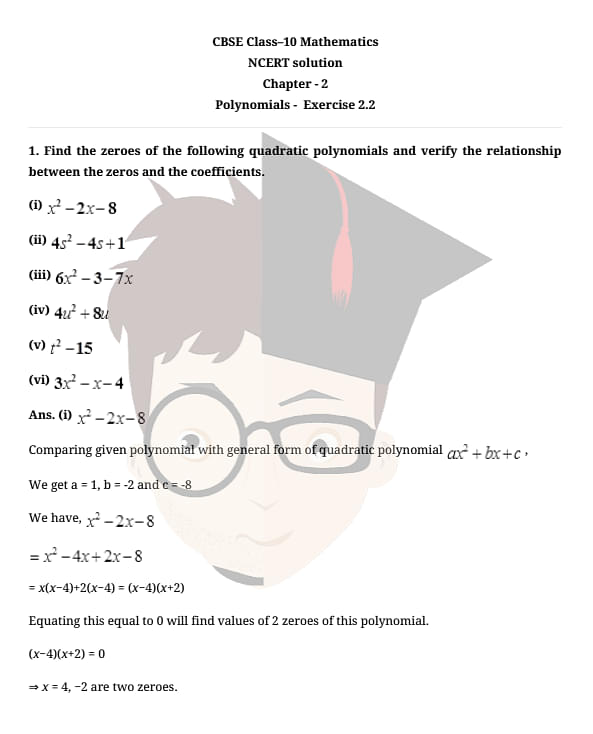
Content Strategy Manager
NCERT Solutions for Class 10 Maths Chapter 2 Polynomials Exercise 2.2 covers different cases of the relationship between Zeroes and Coefficients of a Polynomial. The exercise has 2 questions with 6 cases each.
Download PDF: NCERT Solutions for Class 10 Maths Chapter 2 Exercise 2.2
Check out the solutions of Class 10 Maths NCERT solutions chapter 2 Polynomials Exercise 2.2








Read More: NCERT Solutions For Class 10 Maths Polynomials
Check out other exercise solutions of Class 10 Maths Chapter 2 Polynomials
Class 10 Chapter 2 Polynomials Topics:
| Degree of Polynomial | Zeroes of a Polynomial | Polynomials Formula |
| Vietas Formula | Roots of Polynomials | Cubic Polynomial |
| Polynomials Revision Notes | Polynomials Important Questions | Parabola Graph |
CBSE Class 10 Maths Study Guides:






Comments